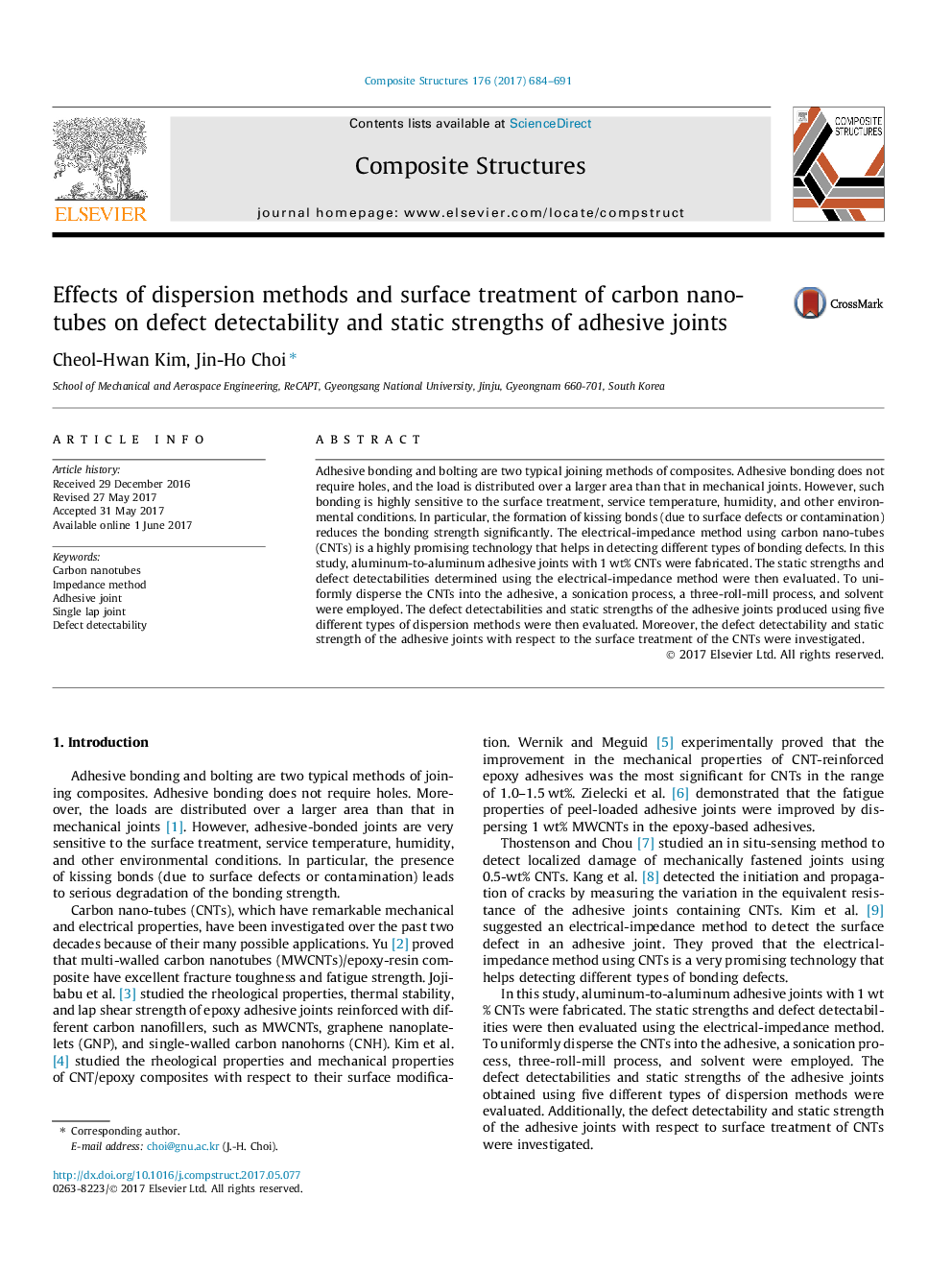| Article ID | Journal | Published Year | Pages | File Type |
|---|---|---|---|---|
| 4911757 | Composite Structures | 2017 | 8 Pages |
Abstract
Adhesive bonding and bolting are two typical joining methods of composites. Adhesive bonding does not require holes, and the load is distributed over a larger area than that in mechanical joints. However, such bonding is highly sensitive to the surface treatment, service temperature, humidity, and other environmental conditions. In particular, the formation of kissing bonds (due to surface defects or contamination) reduces the bonding strength significantly. The electrical-impedance method using carbon nano-tubes (CNTs) is a highly promising technology that helps in detecting different types of bonding defects. In this study, aluminum-to-aluminum adhesive joints with 1Â wt% CNTs were fabricated. The static strengths and defect detectabilities determined using the electrical-impedance method were then evaluated. To uniformly disperse the CNTs into the adhesive, a sonication process, a three-roll-mill process, and solvent were employed. The defect detectabilities and static strengths of the adhesive joints produced using five different types of dispersion methods were then evaluated. Moreover, the defect detectability and static strength of the adhesive joints with respect to the surface treatment of the CNTs were investigated.
Related Topics
Physical Sciences and Engineering
Engineering
Civil and Structural Engineering
Authors
Cheol-Hwan Kim, Jin-Ho Choi,
